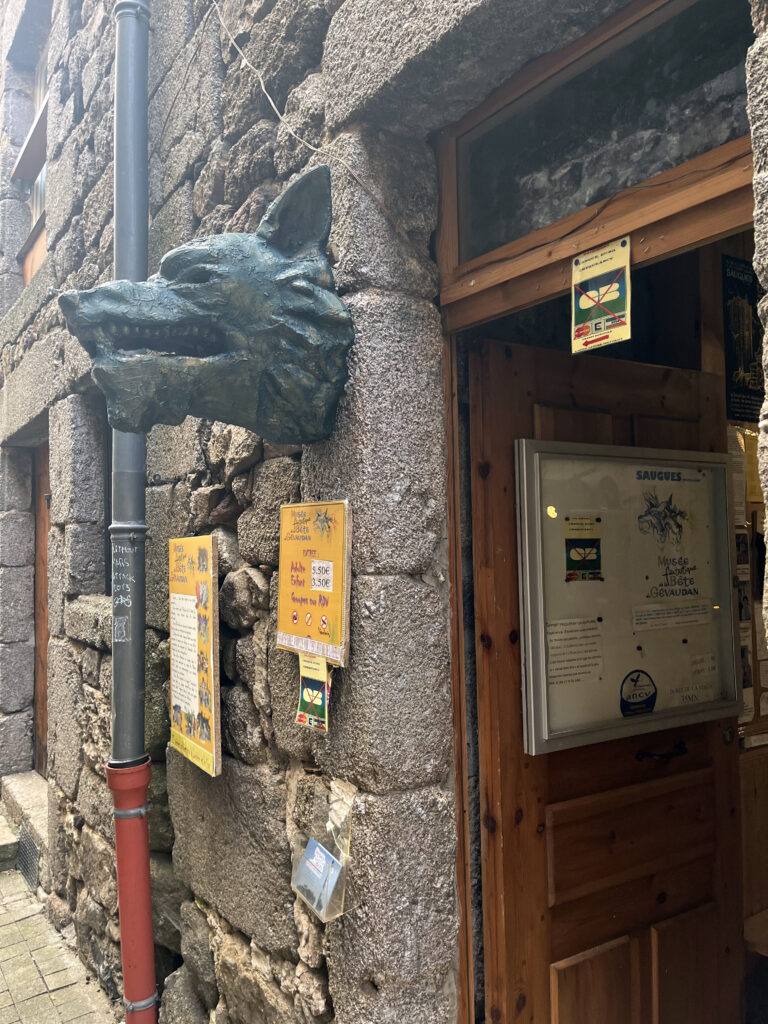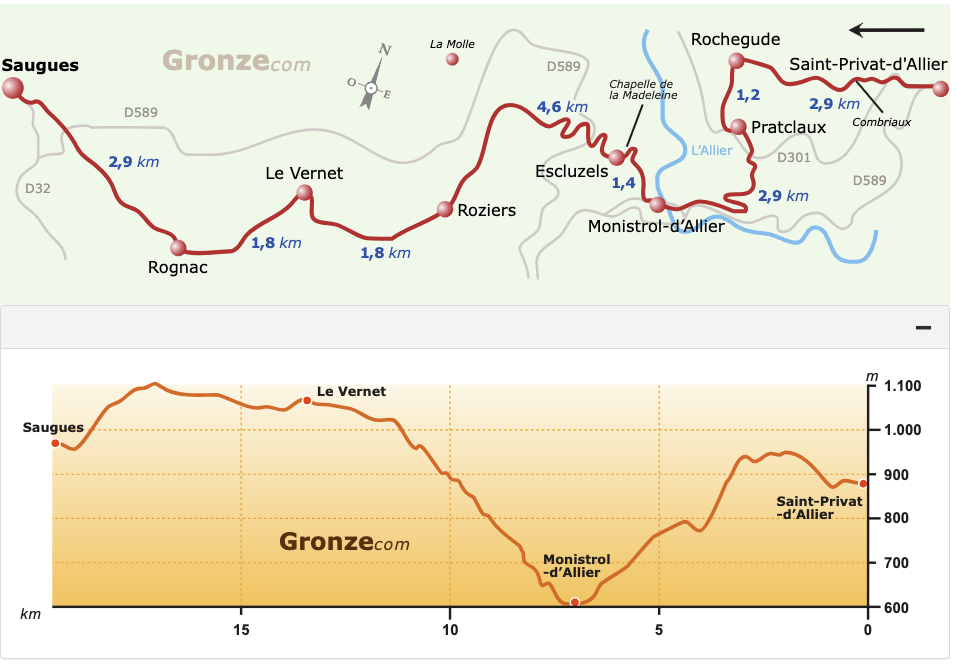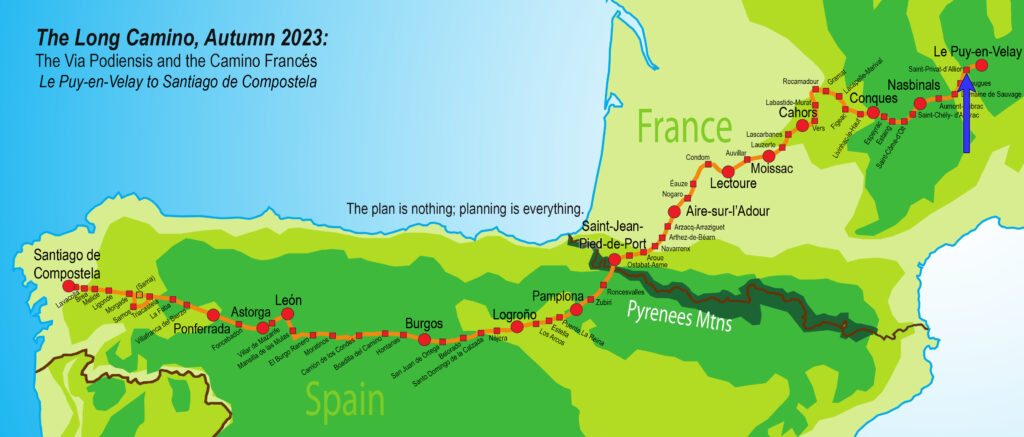Camino Photo of the Day: the Museum of the Beast
The legend of the Beast of Gévaudan is a fascinating story, which in this museum is told through the use of creepy and delightfully kitschy animatronic scenes. Between 1764 and 1767, a previously unknown beast terrorized the locals in this remote and rural region of France. More than a hundred people were killed, and dozens injured. Many of those killed were also partially eaten. These events attracted the attention of King Louis XV, who dispatched dragoons to find and kill the beast, and when that didn’t work, a pair of professional wolf hunters, and then François Antoine, the King’s lieutenant of the Hunt. He soon tracked and killed a monstrously large wolf. Its body was stuffed and sent to Paris, and the depredations were declared to be at an end.
Except that the locals who had witnessed attacks by the beast were unanimous that the animal in question was not a wolf, but something altogether stranger. Wikipedia sums up the descriptions thusly:
one or more beasts of a tawny/russet colour with dark streaks/stripes and a dark stripe down its back, a tail “longer than a wolf’s” ending in a tuft according to contemporary eyewitnesses. It was said to attack with formidable teeth and claws, and appeared to be the size of a calf or cow and seemed to fly or bound across fields towards its victims. These descriptions from the period could identify the beast as a young lion, a striped hyena, a large wolf, a large dog, or a wolfdog, though its identity is still the subject of debate.
A month later, the attacks resumed. If anything, they were more numerous than before. There was a brief lull during the coldest of the winter months, but by spring the attacks again resumed. In June of 1767, a local hunter named Jean Chastel finally shot the beast, and the attacks stopped.
But what was it? By the time the body was examined, it was already putrefying, and positive identification proved impossible for 18th century science. The body was shipped to Paris, where it was perfunctorily examined before being buried. Its whereabouts remain unknown.

Date: 19 August 2023
Place: Saugues, Haute-Loire Département, Region of Auvergne-Rhône-Alpes, France
Maps!



Pingback: Camino Photo of the Day: Farewell to the Beast – Pilgrims on the Way